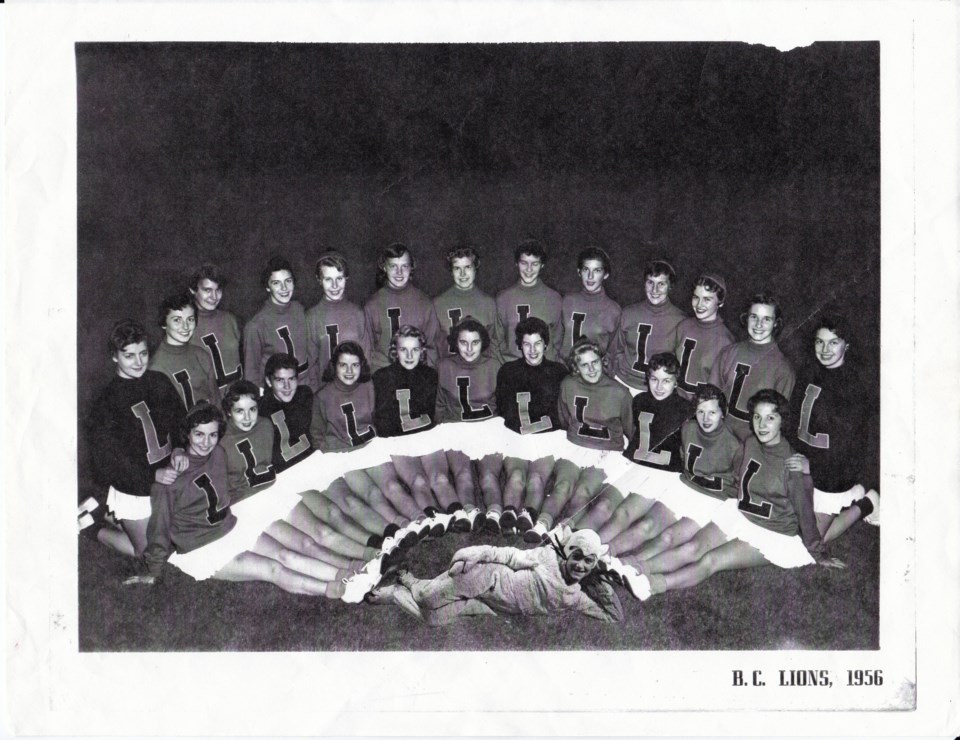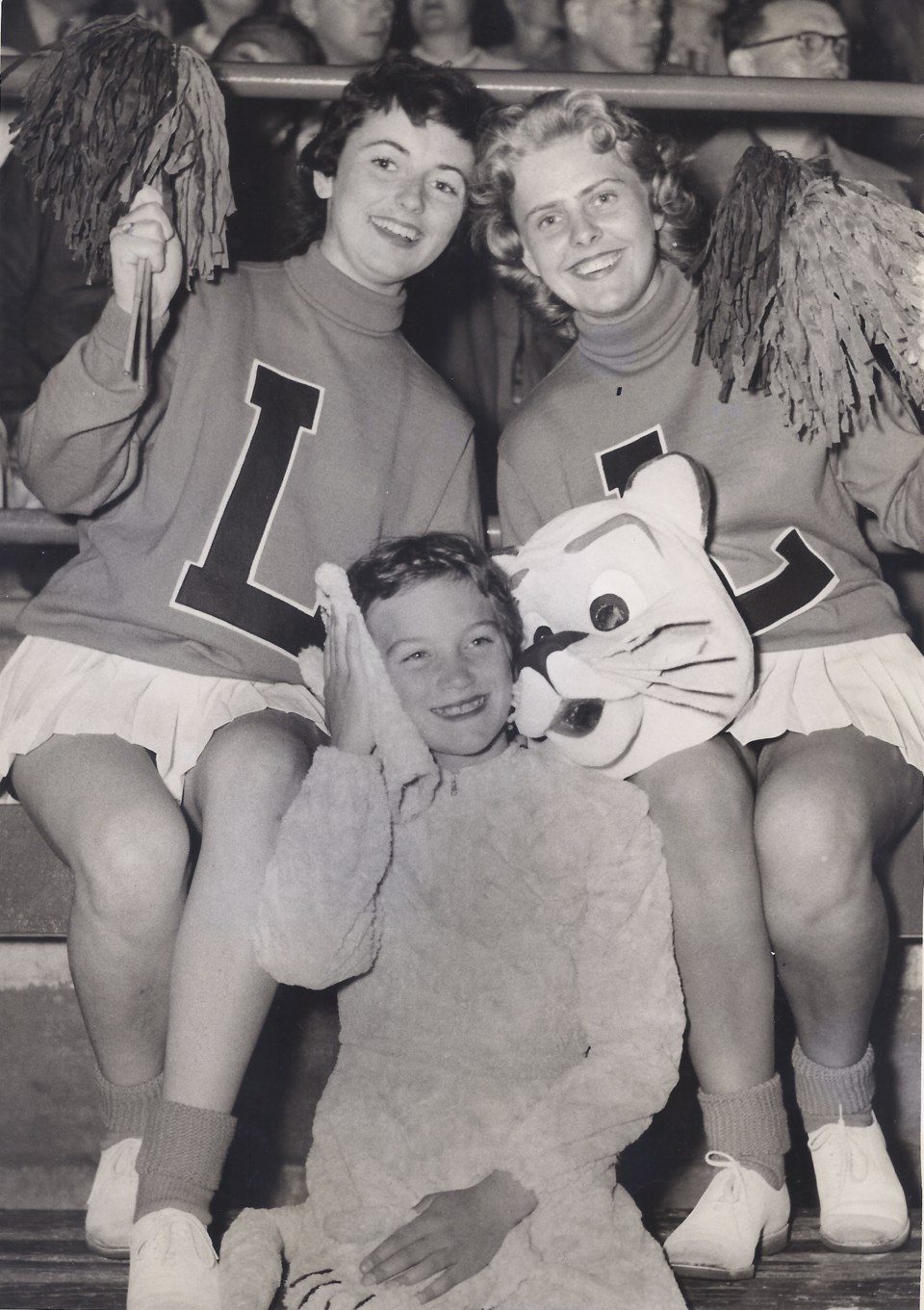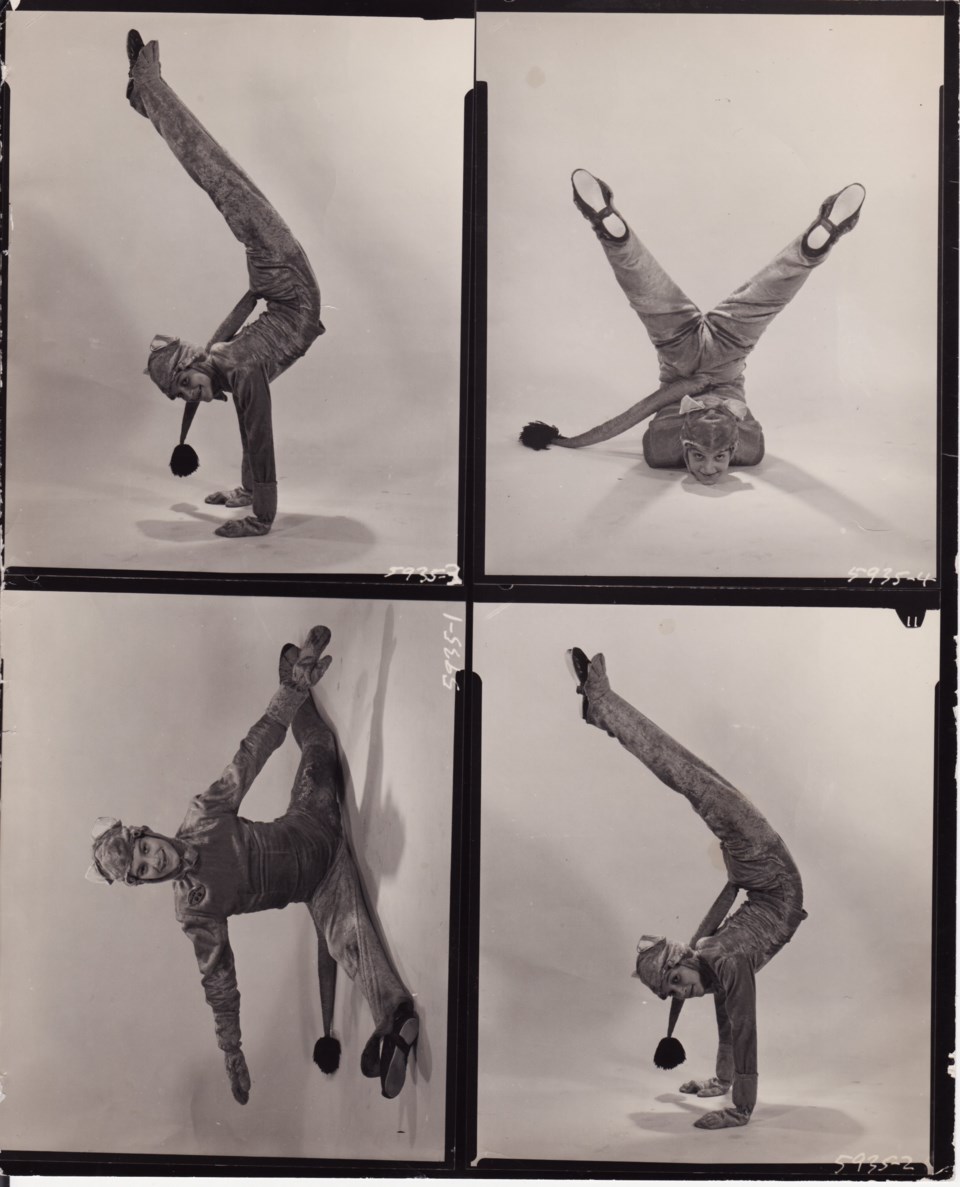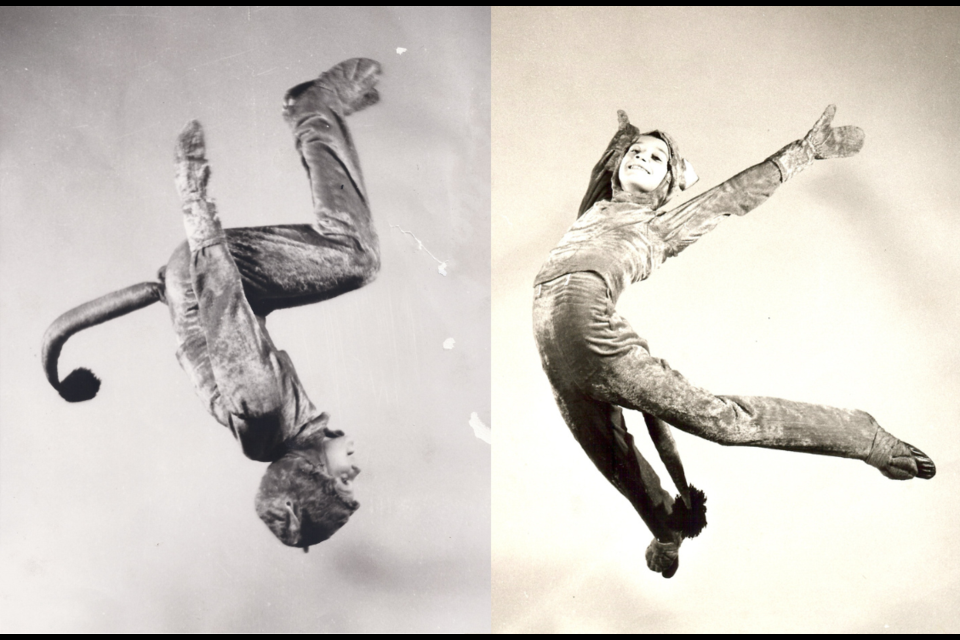Some might know the first mascot to consistently appear at games of a Â鶹´«Ã½Ó³»sports team was likely the BC Lions’ Leo the Lion in the mid-1950s. Leo is a regular presence at Lions games at BC Place to this day. But few know who the first Leo the Lion was. Many will be surprised to learn it was actually one of Canada’s best swimmers of the 1960s: Vancouver’s Mary (Stewart) McIlwaine.
For eight seasons from 1956 until 1963, Mary was a constant presence at BC Lions home games at Vancouver’s Empire Stadium executing cartwheels, jumps, handstands, and flips as Leo the Lion during pregame and halftime performances.
In 1956, 10-year-old Mary was taking lessons from teacher and choreographer Grace Macdonald at her Â鶹´«Ã½Ó³»studio when Macdonald was hired by the Lions to coordinate their cheerleaders. This also included the team’s first mascot. The Lions board of directors originally wanted a man to play Leo, but Macdonald felt Mary, who had been dancing since she was just four, could do it.
“So that’s how I got the job,” recalled Mary in a recent interview with the BC Sports Hall of Fame. “They fitted me out with a Lions suit and I would practice with the cheerleaders at Grace’s studio and outside when the weather became nicer if it was crowded.”

Typically, before each Lions home game, bandleader Dal Richards and the BC Lions Band marched into Empire Stadium with Mary following closely as a costumed Leo performing all sorts of acrobatic tricks. Richards, the band, Mary, and the cheerleaders then stopped to perform for the crowd at each corner of the stadium. Often they performed the halftime show at centre field.
“On the north end of the stadium near where the Woodward’s Quarterback Club seats were, I’d purposely stay on the grass where I could do backflip, backflip, backflip, backflip, and aerials,” Mary recalled. “It was SO much fun. Everybody could see me all around.”
As the Lions players were introduced and came running out of the south tunnel through two lines of cheerleaders on each side, Mary continued to perform special stunts and tricks.
“By this time, we’d nearly gone around the stadium twice, nearly a half mile, and I was soaking wet perspiring,” said Mary. “I had this Lions suit on and I’d done all this work.”
Mary then rushed up to one of the stadium’s public washrooms with her mother and changed out of her soaked leotard into clean, dry clothes underneath the lion suit. Her parents—her father drove them to the games—didn’t want her catching a cold sitting around in wet clothes for the rest of the game. Then she rushed back to the field.
“We hoped that I didn’t miss a touchdown because I wasn’t there ready to dance with the cheerleaders,” she chuckled.

At first Mary’s Leo costume amounted to a beige-yellow suit complete with mittens for paws, a mountain lion’s tail and a headpiece featuring ears, nose with black whiskers, and eyeholes. Later though, she was asked to wear a cartoonish paper mâché lion’s head which was very difficult for her to see out of.
“That lion's head made me blind!” she said. “I could only see through the nose forwards, but if I had to look down I had to look through the chin. Well, if I’m doing an aerial back somersault, I couldn’t see the ground! It prevented me from doing some of my tricks, but I never complained.”
Over time Mary came to be quite well known for her work as Leo. Today the identities of Leo the Lion, the Canucks’ mascot Fin, or the Whitecaps’ Spike are kept secret, but that wasn’t the case for Mary in the 1950s and early 1960s. She was a star attraction.
“I was always introduced by name with the cheerleaders as the Lions mascot ‘Mary Stewart,’” Mary said. When she was 12, she even appeared on the cover of one of the Lions game programs. “That was cool.”
Mary was never paid for performing at Lions games or other childhood performances, although her parents were given free tickets. There was good reason why Mary didn’t receive any compensation, especially when she became more active in swimming. By age 13 she was representing Canada internationally starting with the 1959 Pan American Games and later two Olympics in 1960 and 1964. These were still the days of the strict amateur code where athletes could not earn anything from their sport or risk losing their amateur status and the ability to compete in international events. Swimmers at that time couldn’t even work as paid lifeguards in the summer for instance.
To not take any chances and jeopardize Mary’s amateur status, her parents were happy the Lions never paid her while performing as Leo. Although the Lions did give her nice gifts before each of her international swimming trips “that could not be construed as money.” One year it was a set of suitcases, another year it was a pearl necklace. She still has the nice SLR camera they gave her in 1960 so she could take photos at the Rome Olympics.
One day in the summer of 1962—Saturday, July 28, 1962 to be exact—epitomizes Mary’s dual interests as world-class swimmer and BC Lions mascot better than any other. It was quite the day, one Mary readily offers as “one of the most incredible days of my life.”
In the afternoon, 16-year-old Mary swam in a specially arranged time trial at UBC’s Empire Pool as part of the BC Swimming Championships. Since briefly holding the 100m butterfly world record a year earlier, in the months since she had been consistently close to breaking the world mark once again. It all came together for her in front of a supportive crowd that included older sister Helen, who was also one of Canada’s top swimmers. After a large butterfly fluttered across the pool just a minute before Mary hit the water—a promising omen given her preferred swimming discipline—she merely went out and broke not one but two world records in one swim. In two lengths of the 55-yard pool, Mary broke her own world record in the 110-yard butterfly by 1.7 seconds finishing in 1minute 7.3 seconds. At the same time, she also broke the 100m butterfly world record by 0.9 seconds and did so by swimming a farther distance given that 110 yards is almost two full feet farther than 100m. Afterwards Mary was jubilant.
“I could tell when I hit the water it was going to be good,” she told the Â鶹´«Ã½Ó³»Sun at the time. “I really felt like going.”
After a nap at home, that evening Mary’s parents drove her across town to Empire Stadium for a Lions exhibition game against the Toronto Argonauts. The Argos defeated the Lions 18-13 before 20,166 spectators. Lions fullback Nub Beamer scored the first touchdown on a short run, with future Canucks radio colour commentator Tom Larscheid peeling off an impressive 23-yard run on the drive leading up to it. Lightning-quick running back Willie Fleming ran 75 yards for the second Lions TD. Most of the Argos scoring came via Bill Mitchell—three field goals, a convert, and a single—who later went on to become one of Canada’s most accomplished wrestling coaches and was inducted into the BC Sports Hall of Fame as a builder in 2020.

But the star attraction that night was Mary fresh off her world record swim.
“I was surprised and thrilled when the game announcer told the crowd about my new world records,” she said in Stadium Stories.
Mary stopped performing as Leo the year before the 1964 Olympics in Tokyo. She went to Arizona to train in a 50m pool over the winter and then there were the Canadian Olympic trials which overlapped with the Lions season.
“So I missed the 1964 season, which was too bad, because they won the Grey Cup that year!”
Ultimately her stellar swimming career later overshadowed her time as Leo. After helping Canada’s 4x100m freestyle relay team to a silver medal at the 1959 Pan American Games, Mary reached the final of the 100m freestyle at the 1960 Olympics in Rome. At the 1962 British Empire and Commonwealth Games in Perth, Australia, she won four medals including an individual gold medal in the 110-yard butterfly, the first Canadian woman in 28 years to win an individual swimming medal at the BECG. One year later, she won four silver medals at the Pan American Games in Sao Paulo, Brazil, before once again making an individual Olympic final, this time the 100m butterfly, at the Olympics in Tokyo. Twice she was awarded both the Bobbie Rosenfeld Award and the Velma Springstead Memorial Trophy (1961 and 1962) as Canada’s female athlete of the year.
Mary’s swimming career also landed her spots in several halls of fame including the BC Sports Hall of Fame’s inaugural induction class in 1966, the Canadian Olympic Hall of Fame in 1975, and most recently the Swimming Canada Circle of Excellence this spring.
After retiring from competitive swimming, she later worked as a teacher in Â鶹´«Ã½Ó³»for 38 years.
The celebrates over 150 years of sporting achievement in British Columbia, inspiring future generations through its collection of 28,000+ artifacts. With exhibits honouring legendary athletes, teams, and sports organizations, we highlight the history of sports in B.C. and the individuals who’ve shaped its rich sports culture.
Explore B.C.’s sports legacy — !



